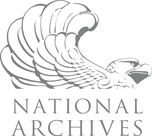 Visualització del contingut web
Visualització del contingut web
1933 Inaugural Address Curriculum Hub

- Historic Context
- Central Issue
- Key Questions
- Primary Sources
- Classroom Activities
- Links for More Information
- Distance Learning Opportunities
Historic Context
FDR won a historic mandate in 1932. After three years of economic depression, Americans decisively rejected President Hoover and the ruling Republican Party. Roosevelt defeated Hoover in a landslide, and Democrats seized control of Congress for the first time in 16 years. They dominated the new Senate by an overwhelming margin of 60 to 35 and enjoyed a 310 to 117 majority in the House.
Voters handed Franklin Roosevelt and the Democrats a blank check. Their only demand was action. What the public—and most Democratic leaders—did not know was what form that action would take.
DEMOCRATIC PARTY
Franklin D. Roosevelt / John Nance Garner (VP
Popular Vote: 22,809,638 / Percent of Vote: 57.4% / Electoral Vote: 472
REPUBLICAN PARTY
Herbert Hoover
Popular Vote: 15,758,901 / Percent of Vote: 39.7% / Electoral Vote: 59
CONGRESSIONAL ELECTIONS
House of Representatives Senate
Democratic 310 [gain of 90 seats] 60 (gain of 12 seats)
Republican 117 35
Other parties 5 1
“We are at the end or our string. There is nothing more we can do.” -President Herbert Hoover, March 4, 1933
FDR’s election restored hope to many. But before he could take office in March the economy took a disastrous turn. America’s troubled banking system began to collapse. During January and February 4,000 banks were forced out of business. Because accounts were not government-insured, millions lost their life savings. Panicked depositors rushed to the remaining banks to withdraw their money. These bank runs threatened the entire financial system.
In desperation, 32 states declared “bank holidays”— temporarily shutting their banks to prevent depositors from removing cash. Remaining states put strict limits on withdrawals. In an era before widespread credit cards, this meant people could not make purchases. In many places barter, IOUs, and money substitutes called “scrip” replaced cash transactions.
America’s economy faced destruction, but President Hoover hesitated to act and president-elect Roosevelt gave few clues about his intentions.
Central Issue
“So, first of all, let me assert my firm belief that the only thing we have to fear is fear itself.” -Franklin Roosevelt, Inaugural Address, March 4, 1933
On Inauguration Day, Washington was cold and overcast.
At the Capitol, FDR braced himself on his son James’s arm as he made his slow way to the rostrum to take the oath of office. Then, as the crowd grew quiet, he opened his inaugural address.
The new president offered hope to a desperate people: “This great nation will endure as it has endured, will revive, and will prosper.” Then, in bold words that reverberate in public memory, he proclaimed, “the only thing we have to fear is fear itself.”
The greatest applause came when Roosevelt said he would ask for wartime executive powers if Congress failed to act against the emergency. Eleanor found the crowd’s reaction “somewhat terrifying”— a frightened public seemed prepared to do anything FDR asked.
Roosevelt’s First Inaugural Address includes the famous line— “the only thing we have to fear is fear itself.” It’s generally believed that Roosevelt’s political adviser Louis Howe added these words to the speech. But Howe’s source is a mystery. Presidential adviser Raymond Moley claimed Howe saw the line in a 1933 department store advertisement. But a 1931 newspaper article quotes U.S. Chamber of Commerce president Julius Barnes as saying, “In a condition of this kind, the thing to be feared most is fear itself.” FDR speechwriter Samuel Rosenman credited Henry David Thoreau, who once wrote: “Nothing is so much to be feared as fear.”
Key Questions
1)Why had Americans so soundly defeated Herbert Hoover and so many other Republicans in the Congress in the elections of 1932?
2)What factors account for Hoover feeling like ‘we were at the end of our string’ and Roosevelt feeling like ‘the only thing we have to fear is fear itsel.”
3)What did Roosevelt offer the American people in his first inaugural address?
4)What themes did Roosevelt set forth for America in his first inaugural address?
5)What evidence does Roosevelt provide to support his plans and themes ?
6)How did people respond to Roosevelt’s speech?
Primary Sources
Audio/Visual
Teachable Moments: Emergency Legislation: The Bank Holiday
Teachable Moments: The First 100 Days
Classroom Activities
Classroom activities for students
Links for More Information
You can learn more about President Roosevelt’s 1st Inaugural Address by visiting our website at www.fdrlibrary.org or by visiting one of the following links.
https://www.inaugural.senate.gov/about/past-inaugural-ceremonies/37th-inaugural-ceremonies/
https://www.archives.gov/education/lessons/fdr-inaugural
https://www.youtube.com/watch?v=MX_v0zxM23Q&feature=channel
https://www.loc.gov/rr/program/bib/inaugurations/fdr/index.html
http://www.presidency.ucsb.edu/ws/?pid=14473
roosevelt%E2%80%99s-first-inauguration-1933
roosevelt%E2%80%99s-first-inaugural-address
Distance Learning Opportunities
Onsite and Online
The Roosevelt Presidential Library and Museum offers onsite and online interactive presentations about President Roosevelt’s first Inaugural Address.
All presentations are curriculum centered and developed using documents, photographs and reproduction artifacts selected from the Roosevelt Presidential Archives consisting of 17 and a half million pages of documents, more than 130,000 photographs, 35,000 artifacts, and nearly 50,000 books… 22,000 of which are from FDR’s personal book collection.
Each session consists of a 15-20 minute presentation followed by a 15-20 minute question and answer period where you and your students get to follow up and cross examine with whatever questions, or comments you may have regarding FDR’s first Inaugural Address.
Sessions can be delivered via skype, Poly Com Zoom Room or Google Hang Out. And they are all offered free of charge!!
For more information about scheduling a session with your class contact the Library’s education specialist at: Jeffrey Urbin at (845) 486-7751 or Jeffrey.urbin@nara.gov



